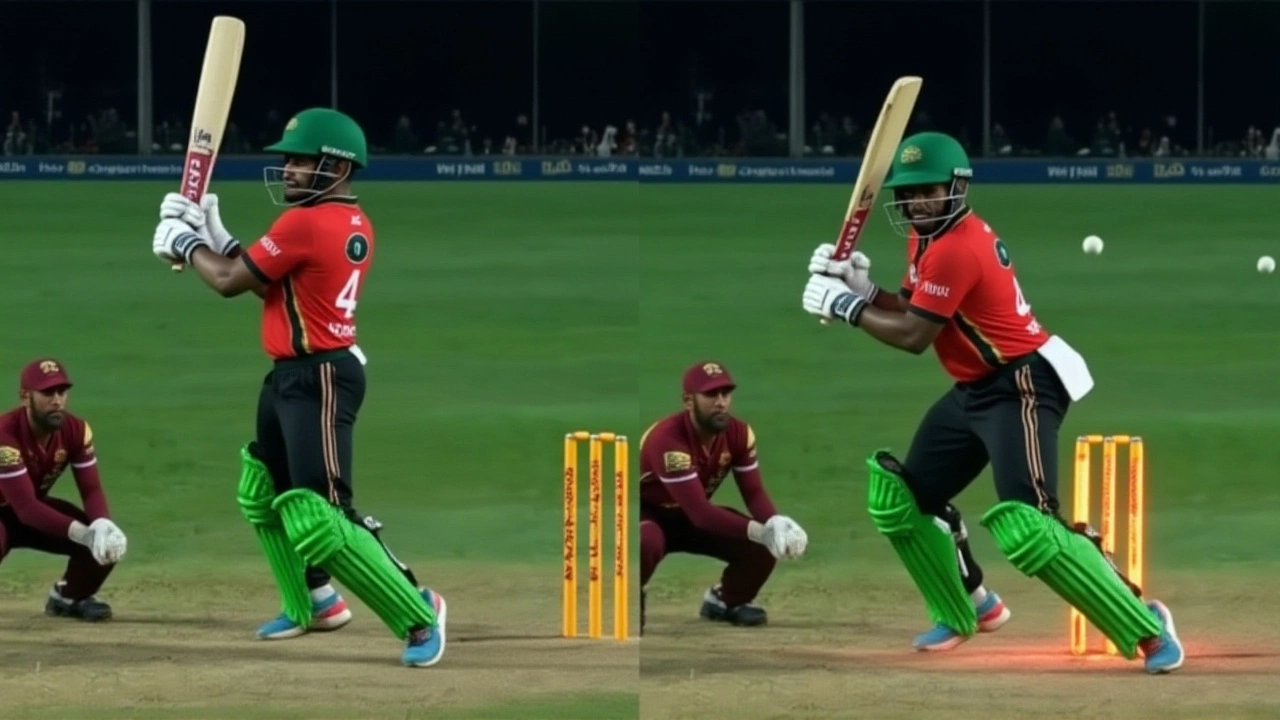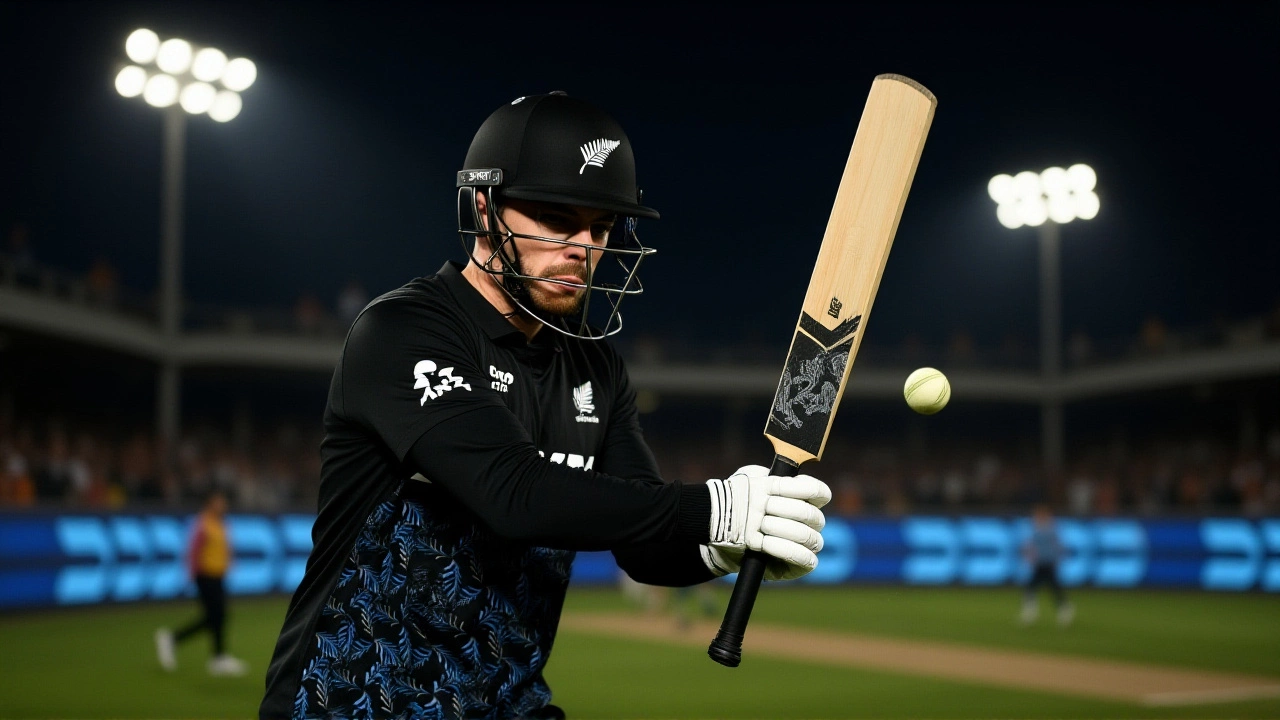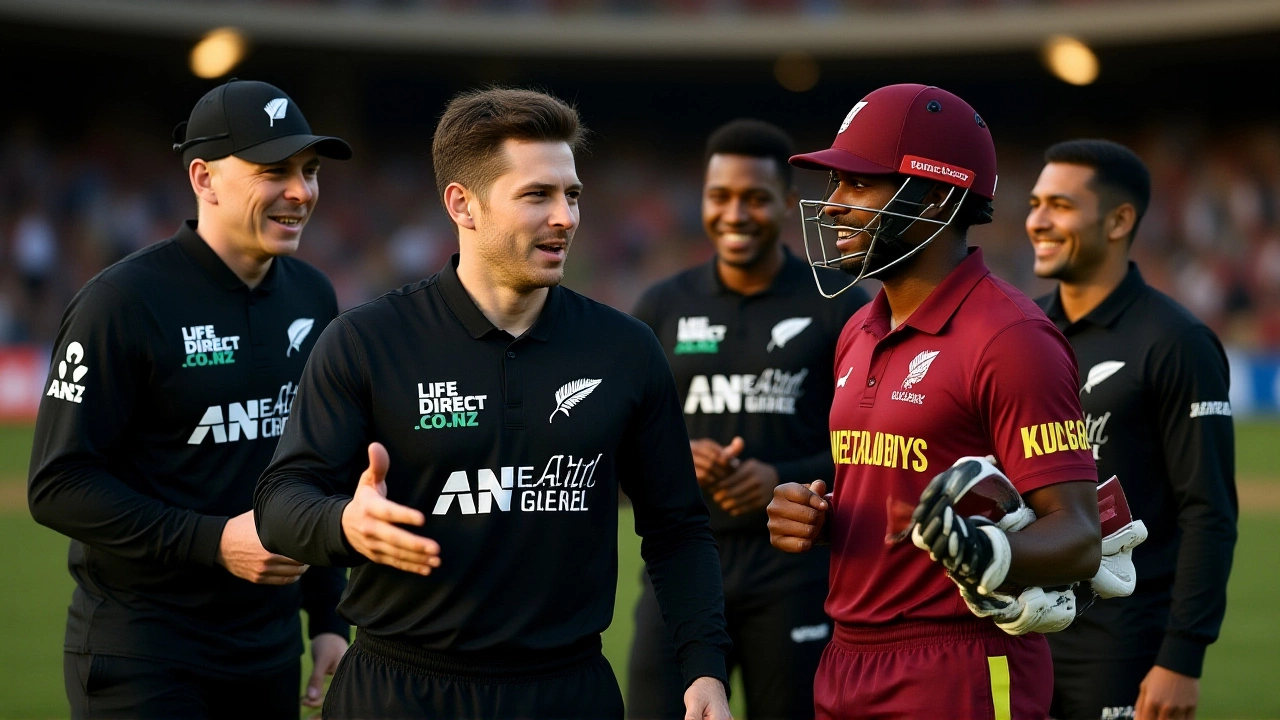With three balls to spare and five wickets in hand, New Zealand pulled off a nerveless chase against West Indies at McLean Park on November 19, 2025, to take a 2-0 lead in their three-match ODI series. The win wasn’t pretty — it was messy, thrilling, and utterly New Zealand. After West Indies posted 247/9 in 34 overs, fueled by Shai Hope’s series-best 146 runs across two matches, the visitors looked set to level the series. But then came Devon Conway, the quiet opener from Lower Hutt, who turned pressure into poetry with a 90 off 84 balls — calm, precise, and utterly decisive.
Chase Under Pressure
New Zealand’s chase began with fireworks. Rachin Ravindra, the 24-year-old Auckland-born dynamo, smashed 56 off just 46 balls, his boundaries slicing through West Indies’ shaky field placements. Conway, ever the anchor, matched him stroke for stroke. Together, they added 124 for the first wicket in under 18 overs. The crowd at McLean Park roared. The West Indies bowlers, led by Jayden Seales’ four wickets, looked rattled. But then — the collapse. Conway fell in the 29th over, caught at deep midwicket. Ravindra followed minutes later. Suddenly, 248 felt like 300.
At 194/4 in the 31st over, New Zealand needed 54 off 54 balls. The momentum had shifted. Enter Mitchell Santner. The left-arm spinner, usually trusted to contain, became the aggressor. He cracked three sixes and two fours in his 15-ball 34, including a brutal pull over square leg off Romario Shepherd in the penultimate over. When the final ball of the 33rd over was dispatched to the fence by Santner, the stadium erupted. Five wickets left. Three balls to spare. Game over.
Hope’s Heroics, But Not Enough
For all the drama of the chase, the story began with Shai Hope. The West Indies captain, born in Piggotts, Antigua, played a masterclass in patience and placement. His 84-ball 80 in this match — his second consecutive half-century — took his series tally to 146 runs, the highest by any batter in the two completed ODIs. He carried the innings when others faltered, surviving 103 balls and hitting 12 boundaries. But without support, his brilliance went to waste. West Indies’ middle order, which had looked promising in the first ODI, collapsed again. Only two other batters reached 30. The lack of depth exposed the gap between the two teams.
Meanwhile, New Zealand’s bowling was clinical. Kyle Jamieson, the towering fast bowler from Auckland, finished the series with six wickets at an economy of 4.82. His ability to swing the ball both ways, especially in the powerplay, disrupted West Indies’ rhythm. Jayden Seales, the 23-year-old Trinidadian paceman, was the only bright spot for the tourists, taking 4 wickets across the two matches. But even he couldn’t stop the tide.

Series Momentum and What’s Next
New Zealand now leads the three-match ODI series 2-0. The final game is set for Seddon Park in Hamilton on November 22, 2025. A win there would seal the series and give New Zealand momentum heading into the Test series — the first leg of the 2025-2027 ICC World Test Championship. The Tests begin December 1 at Hagley Oval in Christchurch, where New Zealand won the first ODI by just seven runs.
The West Indies, meanwhile, are in crisis. Their T20I leg — five matches played before the ODIs — ended 3-1 in New Zealand’s favor, with one match abandoned. They lost the opening T20I by seven runs, won the second by three, then lost the next two by nine and eight wickets. The inconsistency is alarming. Captain Hope is carrying the batting, but the tail is silent. The bowling attack lacks penetration beyond Seales. And with the Test series looming, confidence is fraying.

Why This Matters
This isn’t just about two wins. It’s about identity. New Zealand, under captain Tom Latham, has rebuilt its ODI side into a team that thrives under pressure. They don’t need 300 to win. They don’t need sixes galore. They need composure. Conway’s 90, Santner’s 34 off 15 — these are the signatures of a team that knows how to win ugly. West Indies, by contrast, still rely on individual brilliance. Hope’s 146 is a beacon, but it’s a lone one. Without systemic improvement — in middle-order stability, death bowling, and fielding — they’ll keep losing close games.
The numbers tell the story: New Zealand’s batting average in the two ODIs is 38.4; West Indies’ is 29.1. New Zealand’s strike rate in the final 10 overs: 112. West Indies’: 89. That’s not luck. That’s preparation. That’s culture.
Frequently Asked Questions
How did Devon Conway’s performance compare to Shai Hope’s in the series?
While Shai Hope scored more total runs (146 across two ODIs), Conway’s 139 runs were more impactful. Hope’s 80 in the second ODI was brilliant but came in a losing cause. Conway’s 90 in the same match was the backbone of a successful chase. His average in the series (69.5) was higher than Hope’s (73), but Conway’s strike rate (87.7) was more efficient under pressure, making his contribution more decisive in winning matches.
Why was Mitchell Santner chosen to finish the chase instead of a specialist batter?
New Zealand’s batting depth allowed them to promote Santner because he’s been one of their most effective finishers in ODIs since 2022. He’s hit 18 boundaries in his last 120 balls in the death overs, with a strike rate of 134. His left-arm spin also makes him unpredictable in pressure situations. Coach Gary Stead trusts his temperament — and his ability to clear the ropes — more than the lower-order batters who’ve struggled in similar scenarios.
What’s at stake for West Indies in the final ODI and upcoming Test series?
Winning the final ODI would prevent a 3-0 whitewash and offer psychological relief ahead of the Tests. But the bigger issue is the World Test Championship. West Indies are already 10 points behind in the standings. A poor Test performance could eliminate them from contention for the 2027 final. With only 12 points available from the three Tests, they need to win at least two — a tall order given their current form.
How does Kyle Jamieson’s performance compare to other New Zealand fast bowlers in recent ODI series?
Jamieson’s six wickets in two ODIs are his best in a bilateral ODI series since 2023. His average of 18.3 and economy of 4.82 are among the best by a New Zealand quick in a short series since Trent Boult’s 2022 campaign against England. Unlike Boult, Jamieson relies on height and swing rather than pace, making him uniquely effective on New Zealand’s slower pitches — and a nightmare for teams lacking height in their top order.
What’s the significance of Rachin Ravindra being named Player of the Match despite not finishing the innings?
Ravindra’s 56 off 46 balls set the tone. His aggressive start took pressure off Conway and forced West Indies to use their best bowlers early. His strike rate of 121.7 was the highest among all batters in the match. In modern ODIs, early momentum often dictates the outcome — and Ravindra created it. Even though Santner finished it, Ravindra’s role was foundational, making him the logical choice for Player of the Match.
When will the Test series begin, and why is it important?
The three-match Test series begins December 1, 2025, at Hagley Oval in Christchurch, followed by Wellington and Mount Maunganui. It’s part of the 2025-2027 ICC World Test Championship, where points determine qualification for the 2027 final. New Zealand is currently ranked 4th; West Indies sit 9th. A win in this series could vault New Zealand into the top three, while West Indies risk falling out of contention entirely — making these Tests critical for both teams’ futures.





